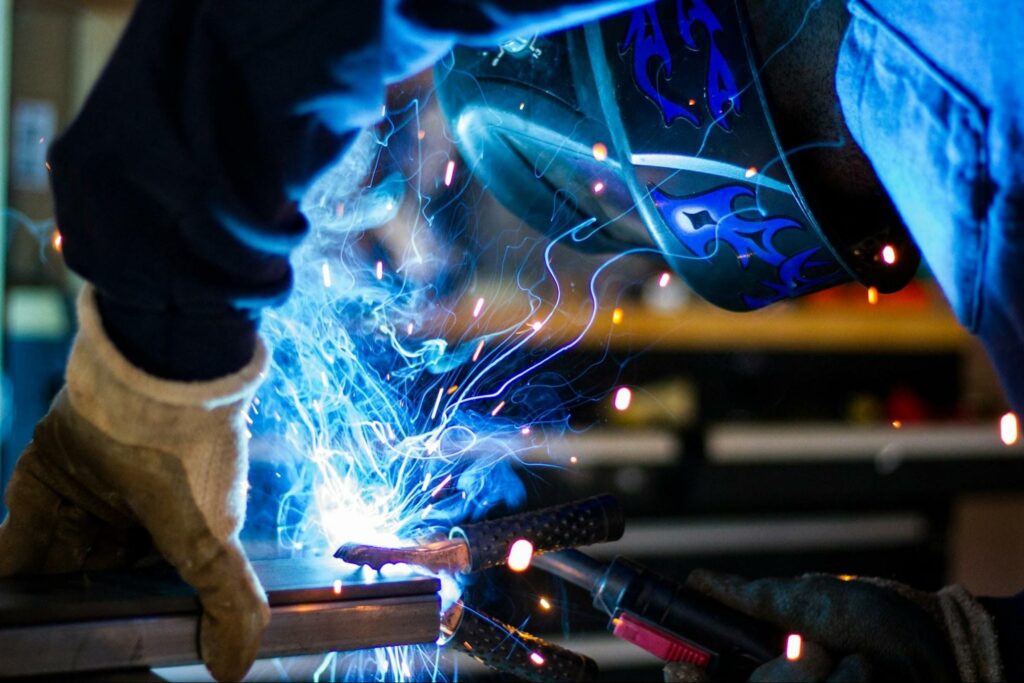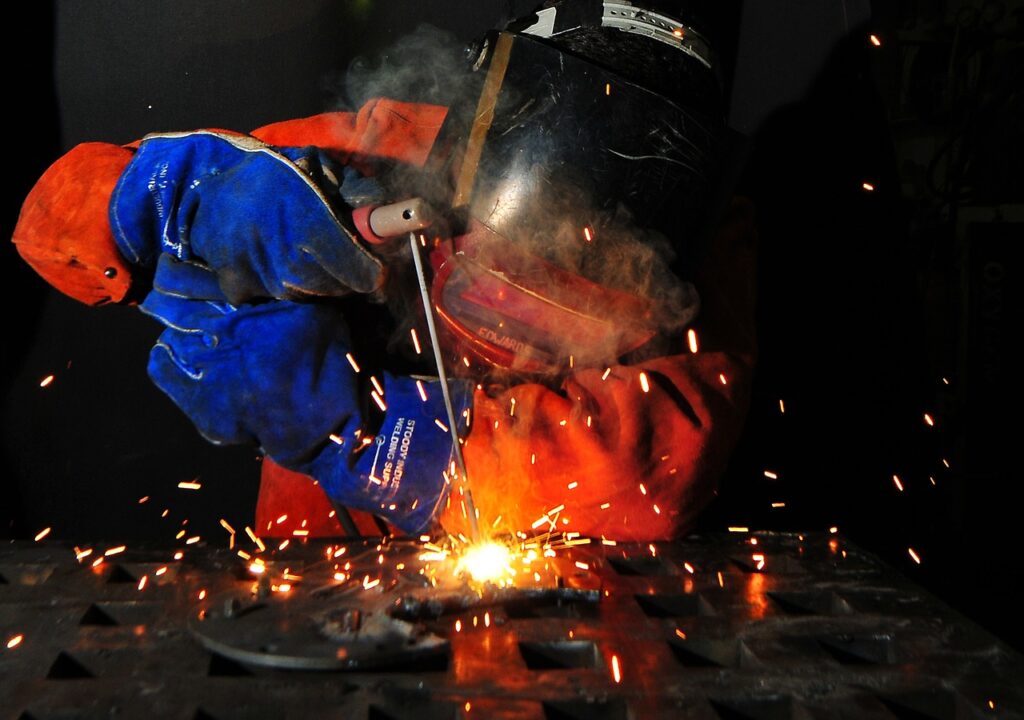In the realm of manufacturing and construction, welding stands as a crucial process that unites materials, predominantly metals or thermoplastics, to form strong, durable bonds. With the advent of advanced technologies, the welding industry has witnessed a paradigm shift towards achieving greater precision and efficiency. These technological advancements not only streamline the welding process but also significantly enhance the quality and durability of the end products. From automated welding systems to state-of-the-art monitoring sensors, technology plays an instrumental role in addressing traditional challenges faced by welders, including safety concerns and the need for precision in complex welds. This document explores seven ways in which technology has revolutionized the welding sector, pushing the boundaries of what’s possible in fabrication and assembly processes.

1. Automated Welding Systems
The integration of automated welding systems into manufacturing processes marks a significant leap toward efficiency and consistency. By employing robotic arms and computerized controls, these systems can execute precise welds at a speed and accuracy unattainable by manual methods. Furthermore, automation reduces the physical strain on human welders, potentially decreasing workplace injuries and enabling a focus on supervisory and quality control roles.
In addition to improving speed and precision, automated welding systems adapt quickly to changes in fabrication requirements. They can be reprogrammed for different tasks, making them versatile tools in both large-scale production and custom jobs. You can learn more about simplifying welding applications by doing some online research. This adaptability, combined with the high-quality output, underscores the value of automation in modern welding practices.
2. Advanced Monitoring Sensors
Advanced monitoring sensors represent a technological breakthrough in enhancing the quality of welds. These sensors can detect inconsistencies in the welding process in real time, allowing for immediate adjustments to be made. This capability ensures that the weld quality remains high, significantly reducing the occurrence of defects and the need for costly rework.
The data gathered by these sensors are invaluable for maintaining a consistent welding process. It enables detailed analysis and optimization of welding parameters, leading to improved overall efficiency and output quality. By identifying potential problems early, these sensors help maintain the integrity of the welding process, ensuring that each weld meets the required specifications.
3. Laser Welding Technology
Laser welding technology has emerged as a game-changer in the welding industry, offering unmatched precision and speed. Utilizing a focused laser beam, this method can achieve highly accurate welds, even in difficult-to-reach or intricate areas. The minimal heat input also reduces distortion and allows for the welding of thin or heat-sensitive materials without compromising their structural integrity.
Beyond its precision, laser welding is known for its versatility, capable of joining a wide range of materials, including different metal alloys and thermoplastics. Its ability to provide strong, high-quality welds in a fraction of the time taken by traditional methods makes it an invaluable tool in sectors where precision and efficiency are paramount.
4. Welding Simulation Software
Welding simulation software has revolutionized the planning and execution of welding projects. By creating detailed simulations of the welding process, manufacturers can predict the outcomes of specific welding parameters before any physical work begins. This preemptive analysis identifies potential issues, allows for the refinement of parameters, and ensures optimal performance of the weld.
This technology not only saves time and resources by reducing trial and error but also contributes to a deeper understanding of the welding process. Welding simulation software is instrumental in educating and training welders, providing them with a risk-free environment to hone their skills and understand the intricacies of different welding techniques.
5. Enhanced Safety Equipment
Technological advancements have significantly improved safety equipment in the welding industry, promoting a safer work environment. Modern welding helmets, for example, offer auto-darkening features, which instantly adjust the lens’s light filtration based on the brightness of the welding arc. This innovation protects welders from harmful radiation and improves visibility, enhancing both safety and precision.
Automation and robotic welding systems have taken welders away from direct exposure to hazardous conditions, further lowering the risk of occupational injuries. Enhanced ventilation systems and protective clothing have also contributed to making welding a safer profession. With these technological advancements, the industry is not only achieving higher levels of precision and efficiency but also ensuring the well-being of its workers.
6. Additive Manufacturing and Welding
Additive manufacturing, commonly known as 3D printing, has begun to integrate with traditional welding techniques to create a more versatile and innovative manufacturing process. This combination allows for the construction of complex structures and components by adding material layer by layer, which can then be joined or enhanced using welding. This method enables manufacturers to create geometries that were previously impossible or too costly to produce, opening up new possibilities in design and functionality.
The synergy between additive manufacturing and welding also paves the way for improved material utilization and waste reduction. By precisely adding material where needed and joining components with welding, there is a significant decrease in material waste compared to traditional subtractive manufacturing methods. This efficiency not only reduces costs but also aligns with sustainable manufacturing practices, making it a valuable approach for the future of the industry.
7. Virtual Reality (VR) Training for Welders
Virtual Reality (VR) technology is transforming the way welders are trained, providing a highly interactive and immersive learning environment. VR simulators can mimic various welding processes, allowing trainees to practice their skills in a safe and controlled setting. This hands-on experience is invaluable, offering immediate feedback and the opportunity to repeat procedures until proficiency is achieved, all without the material costs and safety risks associated with real welding.
Beyond basic skill development, VR training programs can simulate challenging and unique welding scenarios that welders might not otherwise experience until faced with them in the workplace. This prepares workers for a wider range of situations, enhancing their adaptability and problem-solving skills. With the capability to track progress and identify areas for improvement, VR training is a powerful tool for developing a skilled welding workforce ready to meet the demands of modern manufacturing and construction projects.

The incorporation of technology in welding applications has transformed the industry, pushing the boundaries of what is possible and setting new standards for precision, efficiency, and safety. As technology continues to advance, it’s exciting to imagine the potential for future innovations that will further enhance the welding process and drive progress in various industries worldwide. With these advancements, the welding industry is poised to continue its growth and contribute to the development of a more interconnected and advanced world.